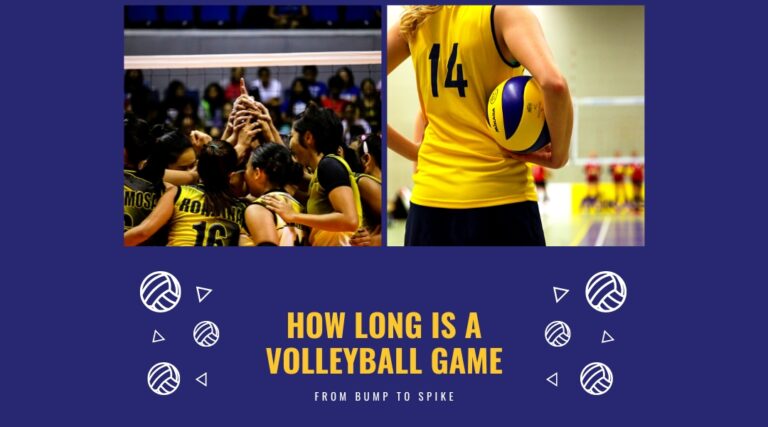Greetings, volleyball enthusiasts, athletes, and curious readers! Today, we’re going to break down the duration of a volleyball game. Whether you’re new to the sport or a seasoned professional, it’s essential to understand the factors influencing how long a match might last. This way, you’ll know what to expect and how best to prepare for your game or plan your day around watching one.
The Basic Structure
Before we delve into the specifics, let’s get familiar with the standard structure of a volleyball game.
A volleyball match consists of a series of sets. In most competitive volleyball, including professional leagues and the Olympics, a match is won by the team that first wins three out of five sets. In some situations, like high school games or recreational leagues, matches may be best two out of three sets.
Each set is played to 25 points, with the exception of the deciding set (if necessary), also known as the fifth set or the tie-breaker, which is played to 15 points. However, in all cases, a team must win by at least two points. This means that sets can, and often do, go over the designated point limit until one team has a two-point lead.
The Nitty-Gritty: How Long is a Volleyball Game?
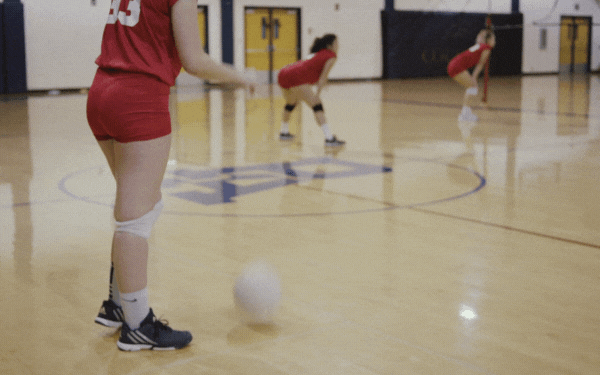
Now, to the million-dollar question: how long is a volleyball game? On average, a match tends to last between 60 and 90 minutes. However, this can vary greatly due to numerous factors, including the teams’ skills, the number of sets played, and the number of time-outs or technical interruptions.
Let’s break down these factors:
1. Skill Level
At higher skill levels, rallies (the back-and-forth play after the serve) tend to be longer. This is because more skilled players are better at keeping the ball in play. Consequently, matches in professional leagues and the Olympics can last much longer than recreational or high school matches.
2. Number of Sets Played
The number of sets played significantly affects the length of the match. A team might win in straight sets (3-0), which typically takes around 60-75 minutes. If the match goes to four sets, it can last up to 90 minutes. But if it goes to a nail-biting five-set decider, it can extend to two hours or even more.
3. Time-outs and Technical Interruptions
Volleyball games have built-in breaks. In a five-set match, there’s a longer break of 10 minutes after the second set. Additionally, each team has two time-outs per set, which last 30 seconds each. There are also technical time-outs when the leading team reaches 8 and 16 points in the first four sets. Each of these lasts 60 seconds. These breaks, coupled with other unforeseen interruptions like injuries or video challenges, can add to the overall duration of the game.
The Record-Breaking Games
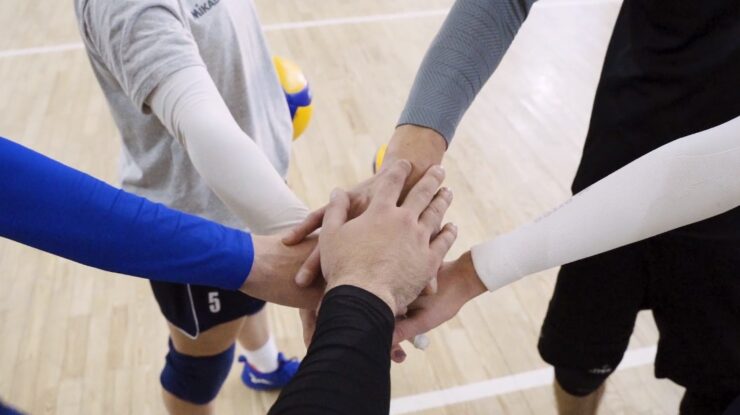
It’s worth mentioning some extraordinary instances where games went far beyond the average duration. The longest recorded volleyball match took place in Norfolk, Virginia, in 2012. The match lasted a staggering 80 hours, 21 minutes, and 17 seconds! Obviously, this is not the norm, and such instances are often charity events or attempts to break world records.
On a professional level, the longest match in the history of the FIVB Volleyball Men’s World Championship was between Russia and Brazil in 2011. The match lasted over two hours and 30 minutes, showcasing the sheer endurance and determination of these athletes.
Maximizing Your Time
Now that we’ve established the potential range in the length of a volleyball game, let’s look at ways to maximize your time, whether you’re a player, coach, or fan.

For Players and Coaches
- Preparation: Thorough preparation can help players perform better and potentially reduce the number of sets needed to win. This includes physical training, studying opponents’ strategies, and maintaining a healthy diet.
- Time Management: Efficient use of time-outs and breaks can also impact the length of the match. Use these opportunities for strategic discussions, quick rest, or hydration.
- Mental Stamina: Volleyball is as much a mental game as it is physical. The ability to maintain concentration throughout a potentially long match can be the difference between victory and defeat.
For Fans
- Understanding the Rules: Knowing the basic rules and structure of volleyball will help you better estimate the duration of a match. This will allow you to plan your day effectively.
- Enjoying the Game: Regardless of the match’s length, the enjoyment comes from appreciating the skills on display, the strategic plays, and the thrilling unpredictability of the sport.
- Following Your Team: If you have a favorite team, following their matches will give you a sense of the typical duration of their games. Some teams might play quicker, aggressive volleyball, leading to shorter games, while others might have a more defensive style, resulting in longer matches.
The Influence of Game Pacing
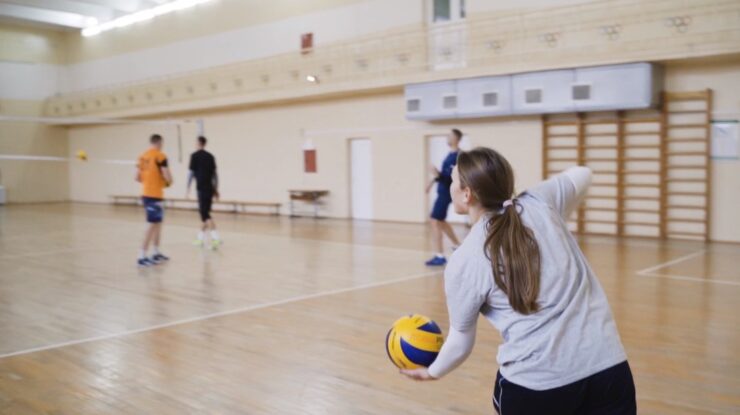
Having explored the basic structure of a volleyball game and the factors that influence its length, let’s delve deeper into the influence of game pacing, the role of referees, and the impact of different play styles on the game’s duration.
The Tempo of the Game
The tempo, or speed, of a volleyball game, can greatly influence its length. Higher-tempo play often involves faster sets, quick attacks, and a rapid back-and-forth that can potentially shorten the duration of the game. On the flip side, a slower-tempo game, characterized by high-arching sets and more strategic, methodical play, can extend the duration of a match.
The Role of Referees
Referees play an integral role in maintaining the flow of the game. Their decisions can add unexpected delays, especially if a call is contested and the referee has to confer with other officials, use video review technology, or manage player disputes.
Referees are also responsible for managing the time between points. The FIVB rules allow for a maximum of 12 seconds from the whistle signaling the end of a rally to the serve for the next point. Delays in this process can add to the overall match time.
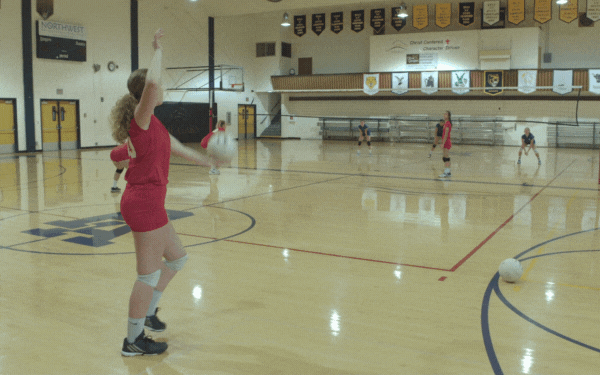
Playing Styles and Strategies
Different teams adopt different styles and strategies, which can influence the duration of a match. Teams with a strong defensive strategy, focusing on digs and blocks, can prolong rallies, leading to longer matches. In contrast, teams with strong offensive strategies may rely on powerful serves and quick attacks, often resulting in shorter rallies and potentially shorter games.
Additionally, teams may use strategic time-outs to disrupt the opposing team’s momentum or to give their players a chance to rest and regroup. This gamesmanship can add to the duration of the match, especially in closely contested games.
The Impact of Venue and Crowd
Lastly, the venue and crowd can also play a role in the length of the game. Outdoor games, such as beach volleyball, may be subject to weather conditions, which can cause interruptions. Also, playing in front of a lively crowd can influence players’ performance and the speed of the game. A supportive crowd can energize players, potentially speeding up the game, while a hostile crowd might cause delays due to distractions.
The Bottom Line
In summary, while we can estimate the duration of a volleyball game, it’s crucial to understand that the actual length can vary due to a multitude of factors. A straight-set win could wrap up in just over an hour, while a five-set thriller could keep you on the edge of your seat for two hours or more.

